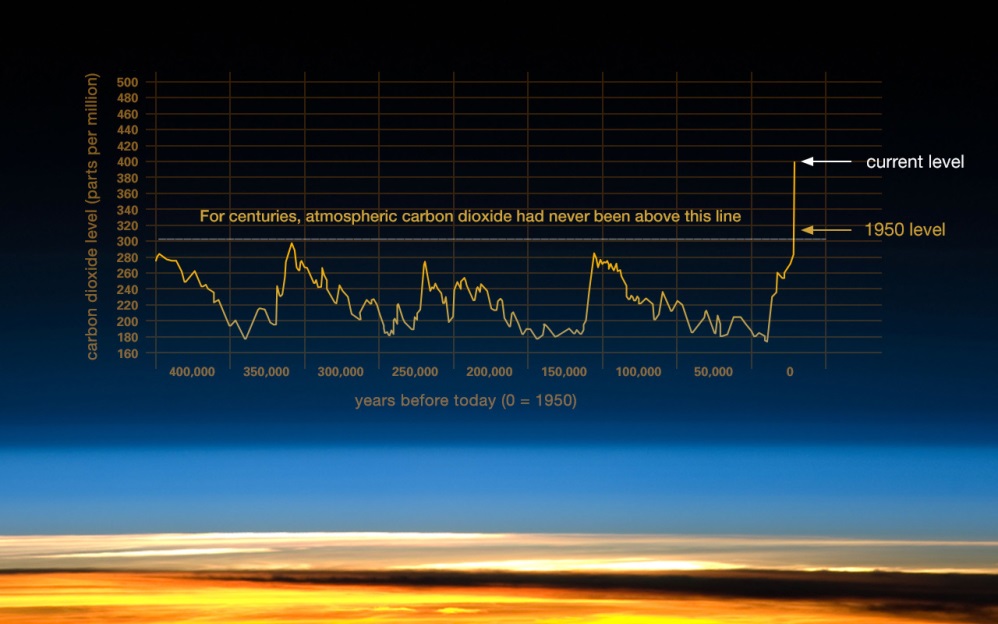Climate change is caused by both natural factors and human activities.
Natural processes include changes in the Earth's orbit of the sun which causes changes in the sun's intensity, plate tectonics changing the position and size of the continents and volcanic activity changing carbon emissions.
Since the early 20th century human activities have significantly changed the composition of the Earth's atmosphere due to the emission of greenhouse gasses. These human activities include the burning of fossil fuels such as coal, oil, gas and peat in factories, the carbon emissions from car exhausts, methane and nitrous oxide emissions from agriculture and the change of how land is being used for example deforestation and urbanisation.

Credit: NASA
Burning fossil fuels produces huge quantities of carbon dioxide (CO2) which is a greenhouse gas. Carbon dioxide along with other greenhouse gasses such as methane, nitrous oxide and chlorofluorocarbons (CFCs) are changing the composition of the atmosphere and are adding to the greenhouse effect. These are all heat trapping gasses, as the sun shines down on the Earth its heat is trapped and prevented from escaping back into space similar to how heat is trapped by the glass in a greenhouse.
Increases in greenhouse gas emission leads to increased heat trapping. This trapped heat is causing an increase in Earth's temperature which is have dangerous knock on effects such as melting ice-caps which lead to rising sea levels and flooding.